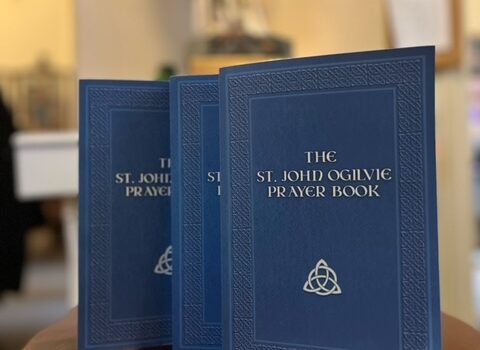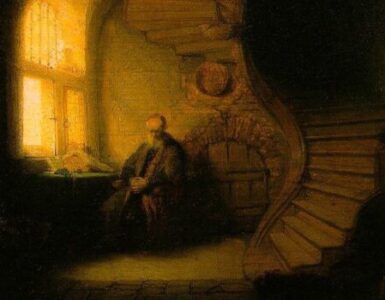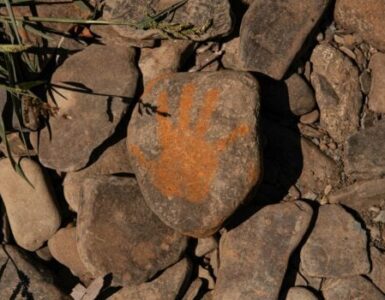Last year, I published an article here on Catholic Exchange called “Irish Christianity Needs an Intervention.” There, I observed that the Catholic heritage of Ireland was rapidly being effaced in favor of a revived paganism wrapped in New Age Gaia worship and packaged as “Celtic spirituality”:
Irish Christianity needs an intervention to save it from becoming nothing but a subset of New Age pantheism. What is required is a new initiative of Irish Catholic studies that gives full due to the brilliance of Catholic Ireland (as opposed to treating it as a regrettable parentheses between ancient Gaelic paganism contemporary secularism).
I recently privileged to make my own contribution to this intervention when I had the opportunity to publish a new prayer book called The St. John Ogilvie Prayer Book (Cruachan Hill Press, 2023). dedicated to the Church’s Celtic tradition. Today I am interviewing the man responsible for compiling the rich tapestry of prayers and devotions found in the St. John Ogilvie Prayer Book, Dr. Joseph Johnson, a Director of Christian Formation in the Diocese of Charleston.
Dr. Johnson, what first interested you in the Church’s Gaelic tradition?
I was always drawn to things Celtic. Rumors on my mother’s side identified her ethnicity as “Scots-Irish” like 90% of the people in the Southern part of the United States. Of course, the marker Scots-Irish is a misunderstood descriptor. These were dispossessed Scots who were relocated by the English to Northern Ireland and eventually immigrated to the USA.
Prior to coming home to Rome in 2013, I was a member of a small ethnically Scottish Presbyterian group that came from Scotland to the USA in the late 1700s. I knew well the history of the so-called “Second Reformation” Scotland. As a former Presbyterian minister, I very much loved liturgy and the Church year (which John Calvin would have frowned on). Ours was a very structured service (which I discovered later looked very similar to the Mass of Paul VI). The service was a blend of Calvin’s Geneva liturgy as well as John Knox’s Book of Common Order.
Upon reuniting with Holy Mother Church in 2013, I pined for a liturgical expression with Celtic sensitivities. As a serious Christian, I didn’t care for anything light and frothy; I wanted to engage the Tradition, but all I could find were prayerbooks that reflected a heavy Anglo-European feel. If I searched the web for anything Celtic, it was always very overly mystical, almost Wiccan.
I have noticed this “New Age” orientation of much of what is branded as Celtic spirituality. Is this why you thought something like The St. John Ogilvie Prayer Book was needed?
Precisely. As mentioned, there is a dearth of authentic Catholic spirituality that looks remotely Celtic. Frustrated with the prospects, I decided to edit my own and that started an incredible journey in 2020. The St. John Ogilvie Prayer Book is meant to fill that gap, offering a resource for Catholics who want a prayer book that is solidly orthodox but also recognizably Celtic.
Can you explain what is contained in The St. John Ogilvie Prayer Book?
First, let’s talk about the calendar. The book uses the Old Gaelic calendar, which contradicts the claim made by modern neo-pagans that the Gaelic calendar is uniquely pagan—the Gaelic calendar is not a religious calendar but a seasonal one. It also contradicts the claim that its use or emphasis is not authentically Catholic or idolatrous.
It also contains a daily office. It was important to me that the office reflect the hours of the traditional Breviary, a collection of “necessary” or “daily” prayers (part of the Catholic routine), as well as a Calendar that not only noted the General Roman calendar but emphasized Celtic saints (all but forgotten casualties to what the East calls “Latinization”). Further, I wanted to emphasize the Celtic seasons co-opted by the neo-pagans, whose “calendar” is a modern, fictional combination of the Celtic bonfire festivals and the Anglo-Saxon solstice-equinox mythology. I wanted to take back the authentic Celtic patrimony that was baptized by missionaries to Scotland. In the words of Chesterton:
I am very glad that our fashionable fiction seems to be full of a return to paganism, for it may possibly be the first step of a return to Christianity. Neo-pagans have sometimes forgotten, when they set out to do everything the old pagans did, that the final thing the old pagans did was to get christened. (London Times, 1926)
There are many traditional prayers and hymns by various saints, which often appear in English, Latin and Scots Gaelic. The Seasons and Days section incorporates customs such as Epiphany house blessings, bonfire blessings, toasts for cèilidhs with friends and family; mourning prayers for the dead and dying; baptism and confirmation, a Scottish hand-fasting rite for use in weddings, traditional Christmas and Easter prayers and traditions.
Moreover, each season or observance is given a thorough treatment historically to show how the Catholic Church incorporated local customs and Christianized them.
There is also a section devoted to catechesis to affirm major elements of Catholic teaching and dogmatic pronouncements. The later section includes devotions to Our Lord such as Adoration and Benediction of the Blessed Sacrament, Way of the Cross, Divine Mercy, First Fridays, and the Eastern prayer rope. There are prayers to the Holy Ghost as well as devotions to Our Lady such as the Miraculous Medal, Brown Scapular, Rosary (in English and Latin), etc.
This is incredibly comprehensive. Where did you find the source material for this?
In my search for Celtic Catholic, pre-Reformation sources, I discovered the Irish Stowe and Bobbio missals and the Scottish Book of Deer and Book of Kells. What was most amazing was the discovery of the poems, prayers, and blessings of the six volume Carmina Gadelica, the late 19th century collection compiled by Alexander Campbell. The former liturgies were thoroughly Romanized by the Middle Ages and the later continued as folk spirituality in the Hebrides among Catholic Scots even after the Reformation. This book is meant to preserve these traditions.
Why did you decide to name the book after St. John Ogilvie?
St. John Ogilvie (d. 1615) was the last Scottish Catholic martyr, a Jesuit who was hanged for ministering to the Catholics of Glasgow. He was the last face of Scottish Catholicism. I wanted to reconnect with that as a way to resurrect Celtic Catholicism. In my view, it’s a way to counteract the rampant rise in Celtic neo-paganism.
Do you have a favorite prayer, saint, or blessing from the Gaelic tradition?
There are many Gaelic and Celtic saints that I learned about in the process, but the brief life of St. John Ogilvie himself, Scotland’s last post-Reformation martyr, made an impact on me. In a last act of piety, as he was about to be hanged, he threw his rosary into the crowd and it was caught by a Calvinist nobleman, Baron John ab Eckersdorff, who eventually became a faithful Catholic. As a former Presbyterian minister, I find this just beautiful.
Why do you think Gaelic spirituality continues to interest people?
As Chesterton, Lewis, and Tolkien noted, the decline of Christendom in the West has been accompanied by a resurgence of paganism. Neo-pagans, mystics, gnostics, and New-Agers of our day are much more open to belief in the supernatural that the West lost to the Enlightenment. The Celtic and Gaelic tradition is laced with spiritual and supernatural imagery and mythology, which attracts people. It speaks to the spirit that moderns stopped believing in 200 years ago. Celtic and Gaelic spirituality grasps the soul deep down with its interaction of sun, moon, stars, seasons, angels, demons, saints, and the Holy Trinity. In my opinion, our post-Christian era is ripe for evangelization, because neo-pagans are already open to spiritual realities. In the words of St. Anselm in the Proslogion, “Neque enim quaero intelligere ut credam, sed credo ut intelligam.” (“I do not seek to understand in order that I may believe, but rather, I believe in order that I may understand”).
The St. John Ogilvie Prayer Book is published by Cruachan Hill Press (Paperback, 355 pages, $26.00).













